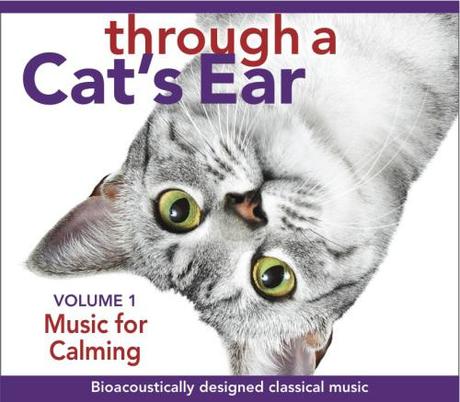Interview with Lisa Spector, co-creator of Through a Dog’s (and now Cat’s) ear music…
About Lisa Spector
Lisa Spector is a concert pianist, Juilliard graduate, and canine music expert. By combining her passion for music with her love of dogs, she co-founded Through a Dog’s Ear.
As a concert pianist, Lisa has won first prizes in Chopin competitions in New York and Los Angeles and has performed in China, Poland, Spain, France, Italy and throughout the U.S.
Note: July 4th and Fireworks. Many dogs have issues with loud noises from thunderstorms and fireworks. Many run off and go missing on this holiday. My Cici does not usually have any issues with fireworks unless big noises are up close and personal… and this year, it sounded like some big KABOOMS were right outside our door… she was looking a bit concerned. so I put on our Through a Dog’s Ear calming canine music (thanks to the wonderful Lisa Spector and Cici calmed down, was sleepy, then I jumped into bed with her and cuddled, and we both just slept thru all of the noisy fireworks for about three hours)… zzzzzzzzzzz… the music really conks Cici and me out…
Lisa has been busy creating an IPawd for doggies with ALL kinds of canine calming music… Through A Dog’s Ear is clinically demonstrated to relieve canine anxiety issues. ICalmDog is a portable, compact player with built-in speaker and battery. With an auto-repeat function, the 4-hours of pre-loaded Through a Dog’s Ear music can be played for 12 hours at a time.http://throughadogsear.com/samples/Calm_Canine_Companion_2/01-Vivaldi-Winter-Largo.mp3
http://throughadogsear.com/icalmdog/
and she has also created music for felines that is similar to the doggie calming music CD’s but specifically for cats.
what is different (between the cat and dog music)?
from Joshua Leeds
Joshua Leeds is a sound researcher, music producer and educator. He is one of few published authorities in the field of psychoacoustics—the study of the effects of music and sound on the human nervous system. Publications include Through a Dog’s Ear (Sounds True, 2008), The Power of Sound (Healing Arts Press, 2001), and Sonic Alchemy (InnerSong Press, 1997).
Sonic Anchoring is experimental. Our goal is to create a mental and emotional sense of safety that arises from familiarity. We accomplish this through a recognizable sequence of notes. The music on Through a Cat’s Ear is repetitious by design. Of fifteen tracks, six interludes are melodic fragments from Bach’s “Rondo Espressivo.” While people hear these interludes as repeating melodic intervals, cats may categorize this information as a familiar frequency matrix. As much as cats are hearing the music, they are feeling a sequence of vibrational frequencies. Like sensory information we instantly recognize—a favorite taste or aroma, our best friend’s voice, a mother’s touch— familiar sensory cues can have a profound and calming impact on the nervous system while providing psychological security.
Frequency Modulation (FM) can be defined as the alteration of sound. To further focus the therapeutic impact of Cat’s Ear, we’ve removed higher frequencies from the re-arranged piano music. FM also takes place in the mid- and low-frequency ranges. Through progressive modulation, “arousing” frequencies are reduced and “soothing” frequencies are increased.

how are people responding to the cats music?
Initial response is wonderful. Like Through a Dog’s Ear, people are also finding Through a Cat’s Ear very relaxing for themselves.
Comments from an email today:
“Thank you for this fabulous CD for cats. I am having construction in the house and my Abyssinian cat, Simba, has been extremely distressed about being locked in a back bedroom and hearing loud construction sounds. He has been a nervous wreck with poor appetite, howling, and he even tried to run away. Your wonderful cat CD came yesterday and I have been playing it for him this morning in a calm setting. That cat is limp. Purring. Smiling.
By the way, I love the music. Thinking of using it myself to help with sleep issues. And my dog, Suki the mini-poodle, is draped upside down in her bed listening to the CD.
I think this is one of the best CDs you have done. You and your colleagues have created something truly special.”
do cats hear differently from dogs?
Yes, they hear a much higher frequency than dogs. Their hearing range goes up to 65K Hz. However, the most important thing is how the frequency of sound affects the feline nervous system.
do cats have different traumas/fears phobias than dogs?
Yes, cats rarely have separation anxiety. But, they have much more of a need for consistency than dogs. Most dogs get very excited when a visitor comes to the front door. Many cats run and hide under a bed when visitors come in. Changes in their environment cause them stress.
what kinds of music do cats like?
That conversation is still up for exploration. When clinical studies of Through a Dog’s Ear were done, it was based on research in the shelter environment by a behaviorist, Deborah Wells. She tested a variety of types of music in the shelter environment and it showed that classical music calmed the dogs. So when we went into the recording studio, I played a variety of types of classical music, including re-arranged, slowed down, simplified versions of classical music that later became Through a Dog’s Ear.
However, there hasn’t been any music studies on cats. So we are not starting from the same place. We are very eager for researchers to run with this project and to put Through a Cat’s Ear and other music through clinical testing.
For more info and for listening samples:
http://throughadogsear.com/tace/ http://throughadogsear.com/samples/

